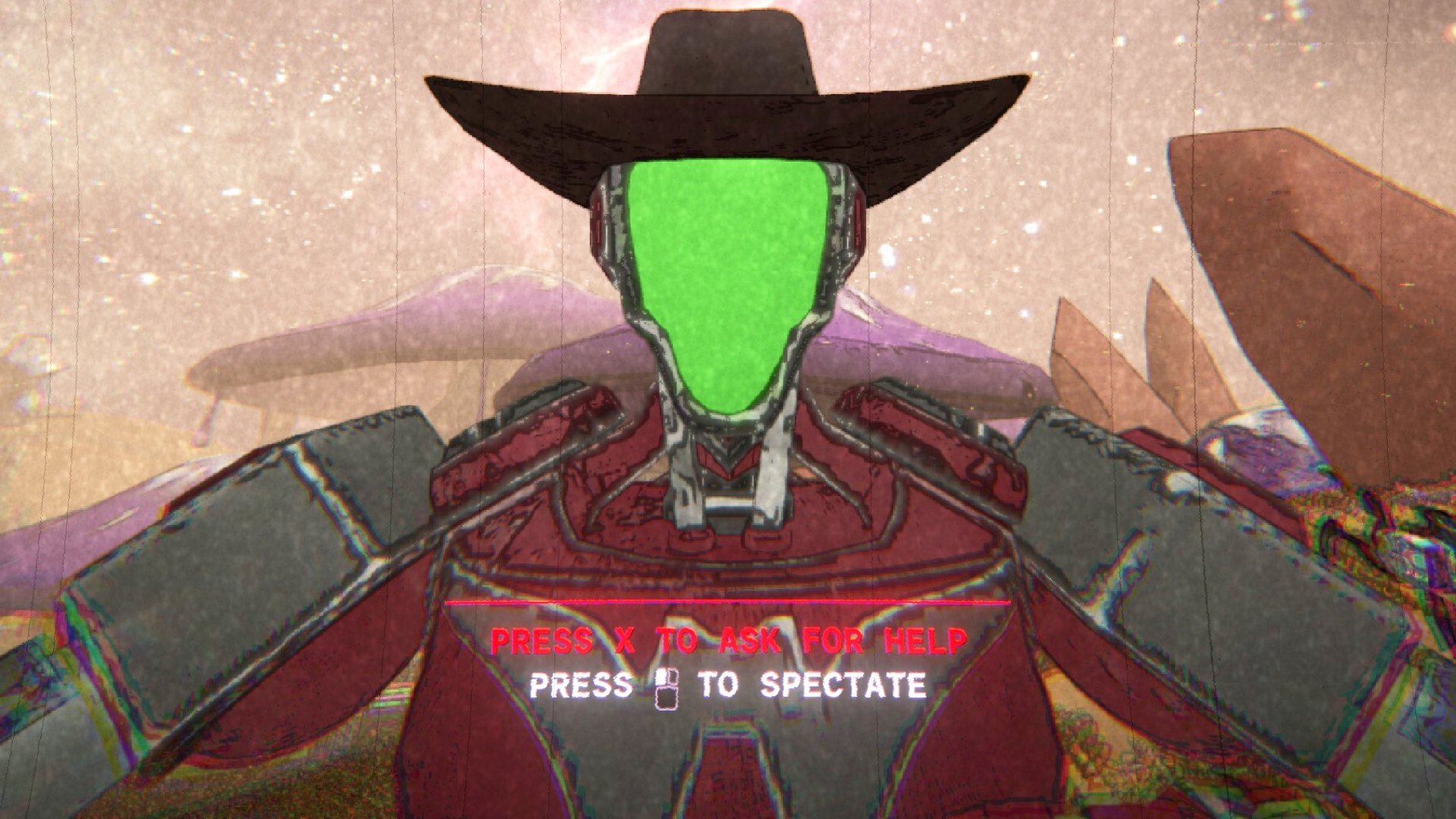The best puzzle games on PC
Stump yourself with the best puzzle games from our list of favorites.
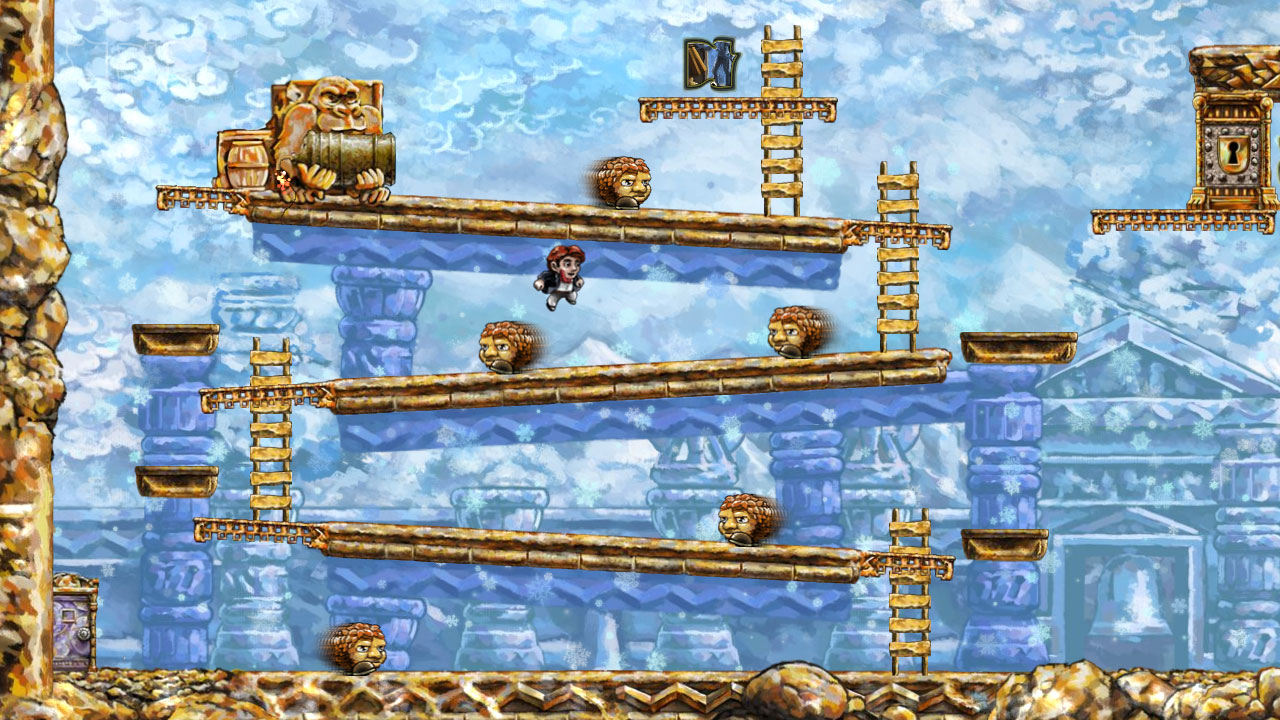
Choosing the best puzzle games from decades of favorites seems like an impossible task, but it's one we've undertaken. Of all the revered PC game genres, puzzle games are among the most classic, but for this list of recommendations, we've haven't tried to rank the greatest puzzlers in the history of everything—just great, modern games we think you'll enjoy a lot right now.
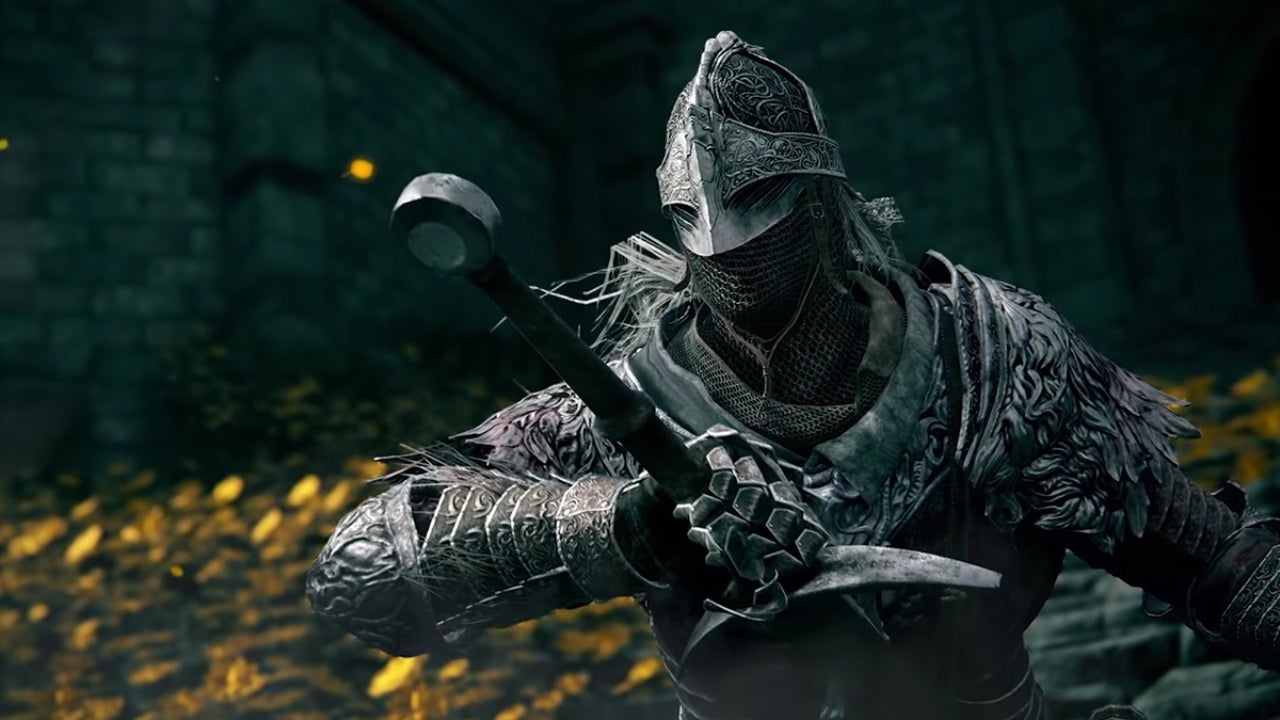
2023 games: Upcoming releases
Best PC games: All-time favorites
Free PC games: Freebie fest
Best FPSes: Finest gunplay
Best MMOs: Massive worlds
Best RPGs: Grand adventures
We've also narrowed our definition of 'puzzle game.' We hope you’ll find a game on this list that you haven’t played before, that’ll test your problem solving skills and ingenuity, and give you that fuzzy wave of relief and pride every time you have a breakthrough. And with that as our goal, we haven’t included games like Peggle, which aren't really puzzling, or Tetris, which wouldn’t be quite so challenging if time weren't an issue.
We’re looking for more contemplative games here—you know, chin scratchers, brow furrowers, hair puller-outers, games that are going to stump you. We'll add to this list in the future, too, dropping in new games, or older ones if we revisit them and decide the ought to have a place here.
Kami
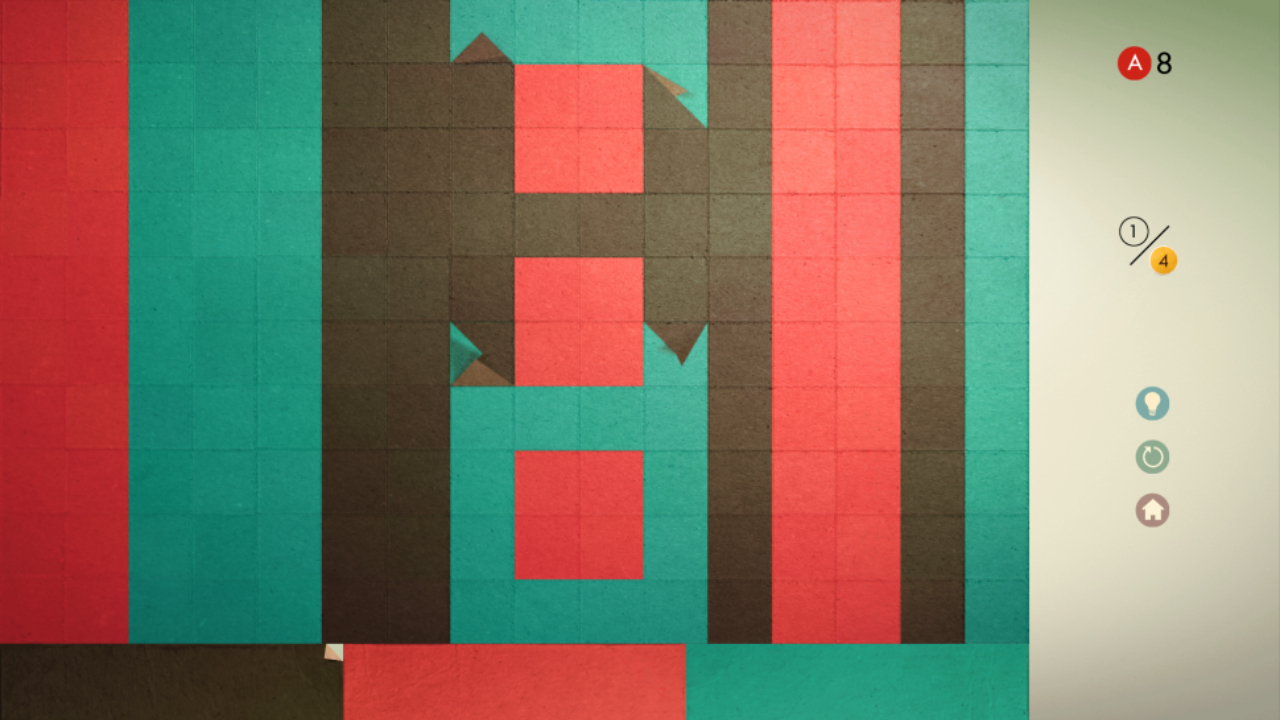
Release date: 2014 | Developer: State of Play | Steam
Kami’s rules are simple: click on any pattern of contiguous squares of the same color to change them to another color of your choosing, and try to make the whole sheet the same color in as few moves as possible. The basic technique is to start by unifying the largest shapes, surrounding any odd colored islands, and then swapping the large area to match those isolated squares. The principle is straightforward, but identifying the most efficient path requires seeing several moves ahead, and after the tutorial puzzles it can take a lot of thought. It feels great when it clicks, and the way Kami’s rough sheets of colored paper magically fold themselves away is mesmerizing. The colors schemes are gorgeous, too, and the music is sweet and relaxing—it feels to us like an excellent companion for a mid-afternoon cup of coffee.
The only problem we have with Kami is the baffling inclusion of a daily hint limit. On mobile, you could pay for extra hints, but on PC, there are no microtransactions. So, if you run out of hints for the day, that’s it. And the hints are important. If a puzzle has us stumped, getting just the first move is really welcome, as it sets us on the right path without removing the sense of accomplishment entirely.
Kami made this list despite some unnecessary mobile baggage, though, because there's a workaround: if you run out of hints and really want another one, you can just set your system clock to another day.
Lyne
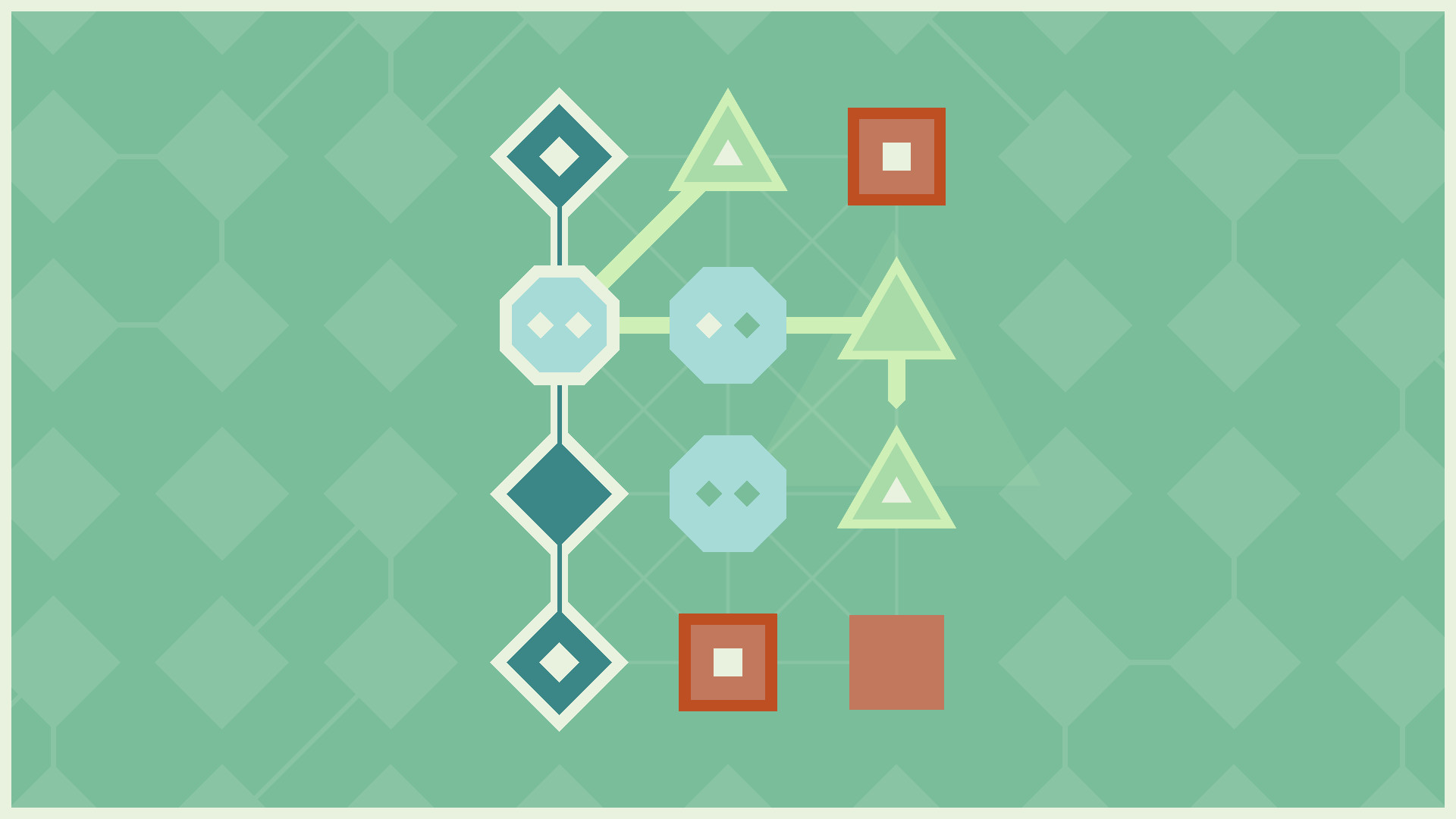
Release date: 2014 | Developer: Thomas Bowker | Steam
Lyne is another game we share with mobile, but worth a shout. It’s not the sort of game that stumps you, stopping you cold—it’s one for fiddling with until the solution appears. The basic problem is that you have a few shapes on the board which need to be connected. Your connective lines can’t intersect each other, and you can only connect shapes of the same type. You must connect every shape with its same-shape friends, and fill every ‘hub,’ each of which might need a different number of connections. The solutions are zig-zagging patterns of lines, perfectly avoiding each other and hitting all the notes they’re supposed to. It can be challenging, but never really frustrating, and it's a great way to zone out.
SpaceChem
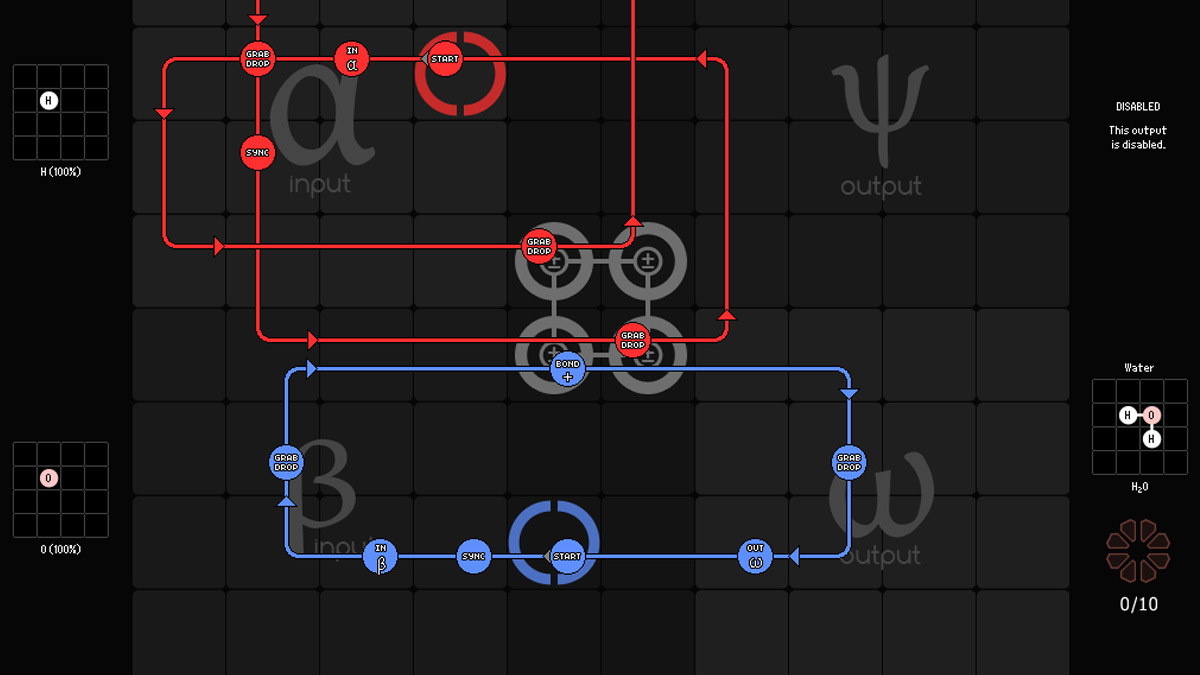
Release date: 2011 | Developer: Zachtronics | Steam
SpaceChem is about making molecules, though you don’t need a graduate degree in chemistry to sort out its puzzles. That’s what’s so lovely about Zachtronics Industries’ games—TIS-100, for instance, is about assembly language programming, but we’ve managed to get through a few puzzles and feel awfully clever without any experience in that area, either.
Keep up to date with the most important stories and the best deals, as picked by the PC Gamer team.
Essentially, you’re creating an elemental circuit board, a set of instructions for building molecules. As in Infinifactory, the act of designing a system and then watching it work is the joy here. Eventually, though, SpaceChem does get hard, so approach it with patience and a willingness to learn.
The Swapper
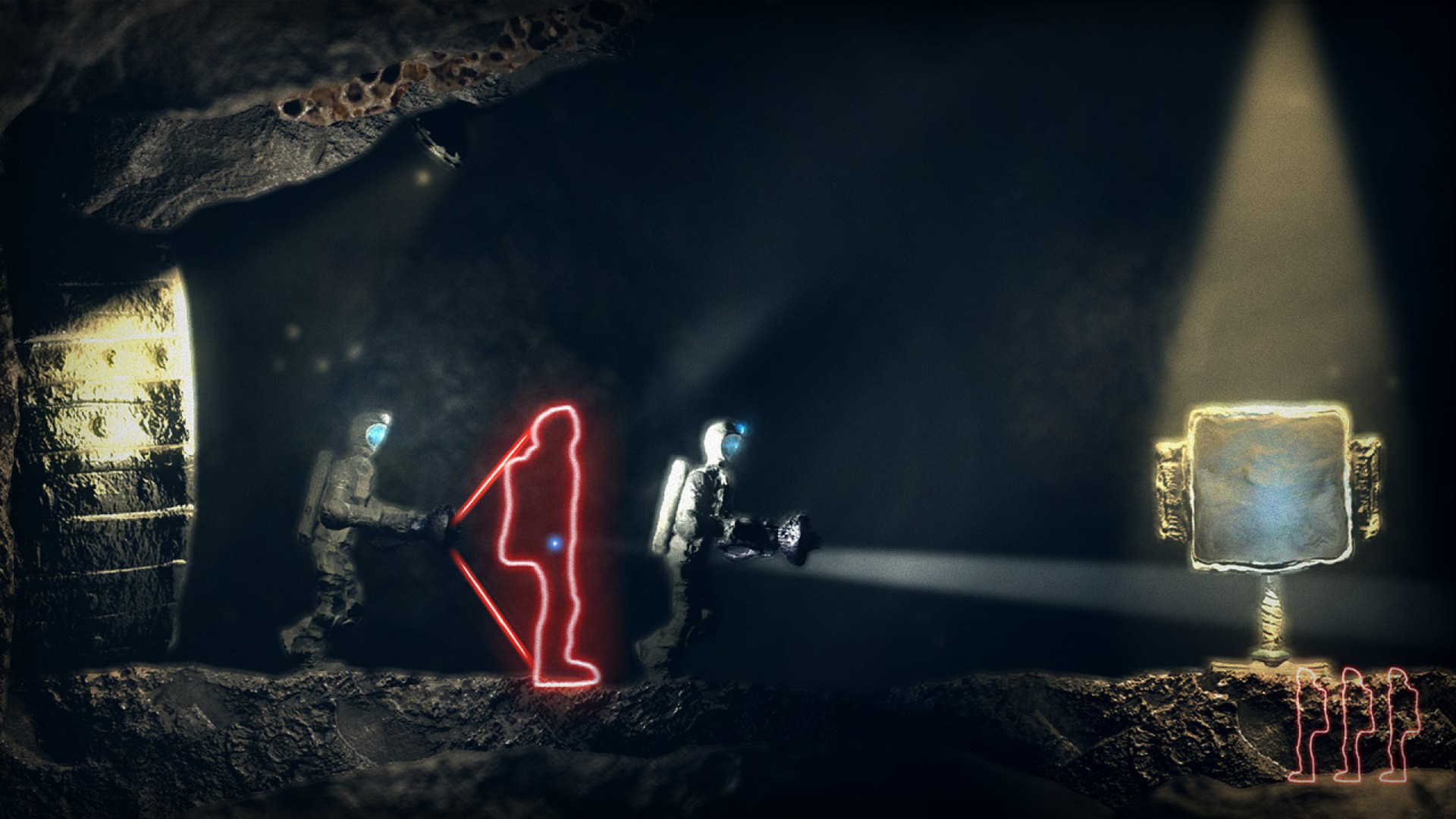
Release date: 2013 | Developer: Facepalm Games | Steam
The primary mechanic in The Swapper is the ability to create a few clones of your main character wherever your line of sight and clone-gun reach permits, which then allows you to ‘swap’ to that clone instantly. Clones mirror everything you do, regardless of where they’re located. Shoot one up to a high platform, take a few steps forward, and that clone will fall forty feet and hit the ground with a sickening crunch. Puzzles revolve around environmental obstacles (switches, light variables that prevent cloning or swapping, twitch clone-swapping) but your cloning tools never fundamentally change. What you’re allowed to do is there from the get go, and if you catch on early enough, there are huge sequences of the game you can skip earlier than normal.
Environments and objects themselves are based on actual clay models, so everything carries an uncanny, semi-realistic aesthetic, as if you could reach out and touch any of The Swapper’s decrepit space station environments. As if the gameplay wasn’t enough, the narrative wraps everything up in a mysterious and somewhat horrifying examination of what qualifies as a living person. Puzzle over life and death while you puzzle over puzzles.
Braid

Release date: 2009 | Developer: Number None | Steam
Every world in Braid opens with a slightly tweaked version of the same ‘tutorial’ level. There’s a pit and no way for your little Mario-esque avatar to jump across. Initially, it feels insulting, a silly commentary on 2D platforming conventions and level design—nothing you typically see in those games is ever impossible. Otherwise, how would you finish the game? But Braid turns one genre into something else entirely by layering abstract rules and mechanics.
Each world operates by its own set of rules based on the passage of time. In one, you can just hold a button to reverse the flow. In another, whatever direction you walk in progresses or reverses the flow of that level’s timeline. They don’t necessarily get more complex, but more unique. Actual difficulty comes from the level designs themselves. Some puzzles will take hours from you, maybe days. They require time away, the solutions coming to you with a slap of the forehead, possibly while you're brushing your teeth or mid-conversation about the last ball game.
So, the pit and gap are no longer an impossibility. A ‘broken’ platforming level transforms into a simple puzzle, and opens up new avenues of thinking in a familiar framework.
The Incredible Machine 2

Release date: 1994 | Developer: Jeff Tunnell Productions | GOG
In the opening sequence of Pee-wee Herman’s Big Adventure, the titular weirdo makes breakfast via an elaborate Rube Goldberg machine. A sequence of bizarre, otherwise unrelated objects are made one—a candle burns a rope that drops an anvil and sends a ferris wheel spinning which—you get the idea. All this, just to crack an egg.
The Incredible Machine 2 (not to discount the first) harnessed both the absurdity and ingenuity of Goldberg machines, tasking the player with completing a fairly simple objective by very complex means. And there were plenty of means. You might just have to ‘get the tennis ball into the waste bin’ but you’re given a few treadmills, gears, a hamster on a wheel, a trampoline or two, and maybe a boxing glove to do it. There were ideal solutions each puzzle, but as the game opened up and allowed for use of more tools, the solutions became less prescribed and more up to player creativity. And even though the puzzles got hard very quick, failure was usually funny instead frustrating. It’s this, the open-ended and experimental nature of The Incredible Machine that makes it such a timeless puzzle game.
The Talos Principle
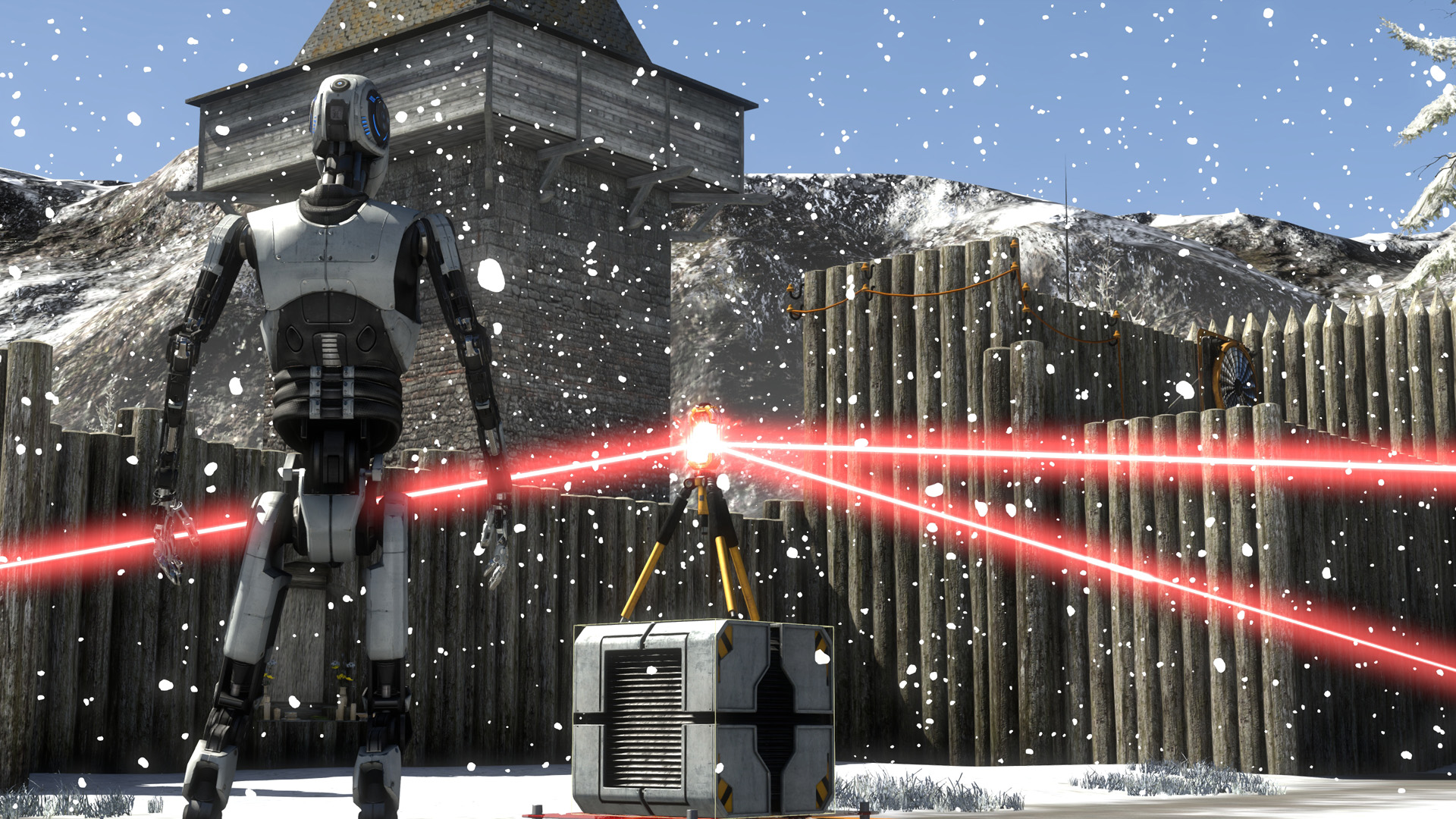
Release date: 2014 | Developer: Croteam | Steam
Without the narrative dressing, The Talos Principle is still an amazing puzzle game. The majority of what you do is navigate a series of puzzle rooms, picking up and moving objects (boxes on switches, prisms that connect lasers and open doors, fans, and so on) in order to unlock doors or skirt by defenses in order to grab a tetromino piece, aka, the win condition. While the game introduces the varying tools over time, the whole of what you can accomplish with them is there from the start. As more tools are thrown into increasingly complex puzzles, it becomes a matter of experimentation and order of operations. What can a fan lift? When should the fan lift? How do I power the fan? Each puzzle feels impossible at first, but by the end, the machinations you discover and execute as a player feel so robust, complex, and smart that it’s hard not to feel like the last two hours of brickwalling were actually a breeze.
That The Talos Principle shares a writer with another game on the list, The Swapper, isn’t a surprise. They both deal with similar themes–consciousness, humanity, moral ambiguity—and wrap them around the gameplay in a way that doesn’t feel convoluted or forced. The Talos Principle’s plot is also really well written. It carries the same slow sense of growing uncertainty that Portal pulled off so well at first, and takes it to another level with genuinely smart philosophical, human, and breezy narrative tidbits. So, while you solve individual puzzles, you’re also puzzling out the nature of what you’re doing, and whether or not pursuing certain paths will have any effect at all on the game’s ending. It’s as mind-bendy as mind-benders get.
Fez
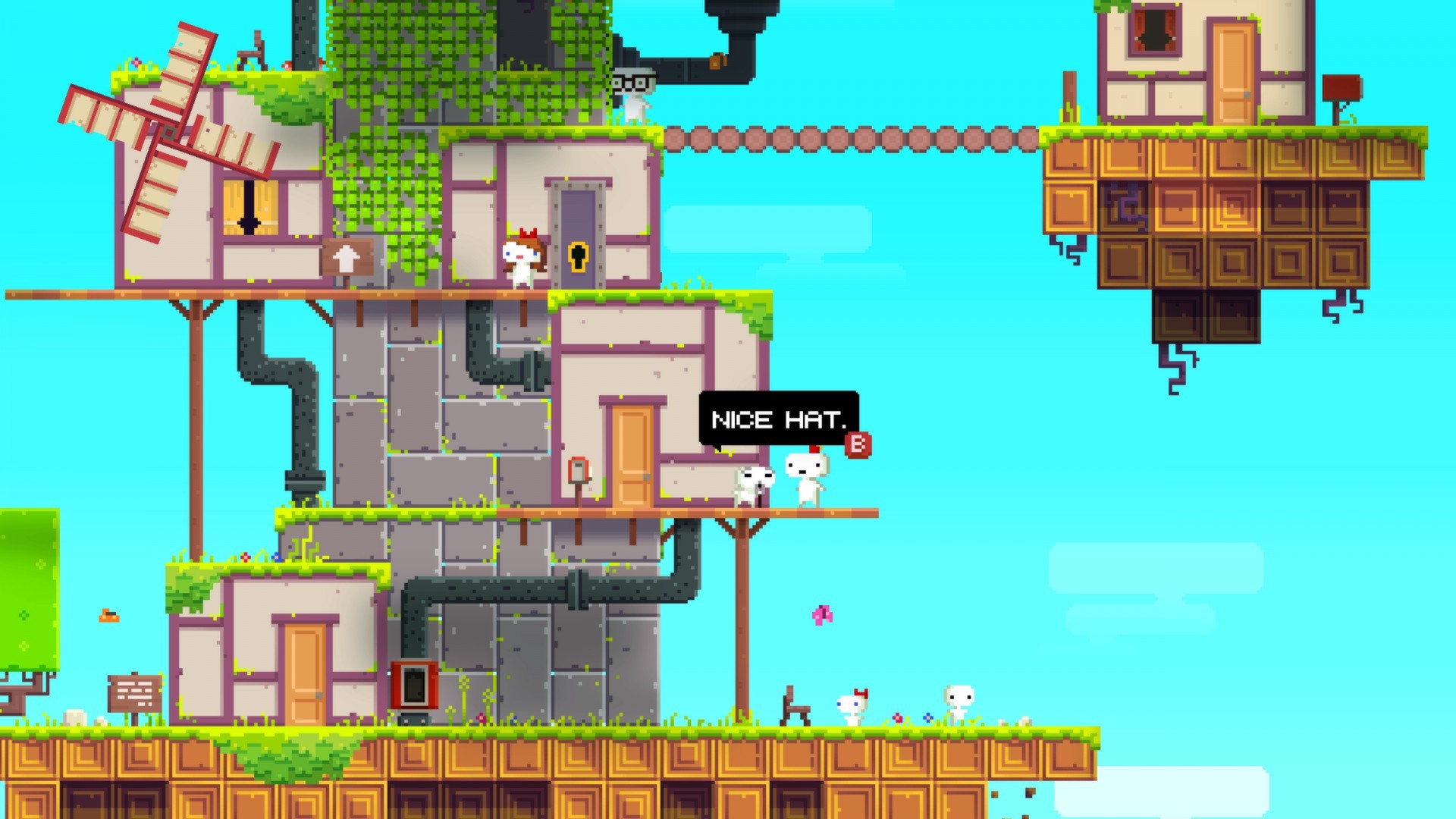
Release date: 2013 | Developer: Polytron Corporation | Steam
Fez is a charming and oddly sad puzzle platformer, but at first glance not a particularly challenging one. Tasked with navigating a peaceful 2D world harried by the arrival of 3D, protagonist Gomez (he wears a Fez) must navigate 3D worlds from a 2D perspective. Sounds confusing! It is, but the simple act of playing the main game through to completion never gets too taxing. The real puzzles in Fez aren’t really required to finish the game, but their impenetrable, mysterious nature invites speculation. They’re puzzles of course, but the way they’re presented feels like archeology: deciphering the meaning in obtuse hieroglyphs and mysterious QR codes. It took the community months to understand how to solve some of these puzzles, and I’m fairly certain some remain uncracked. Play Fez for the beautiful world and breezy tone, stay for one of the toughest challenges hidden in a purportedly ‘easy’ game.
Hexcells Infinite
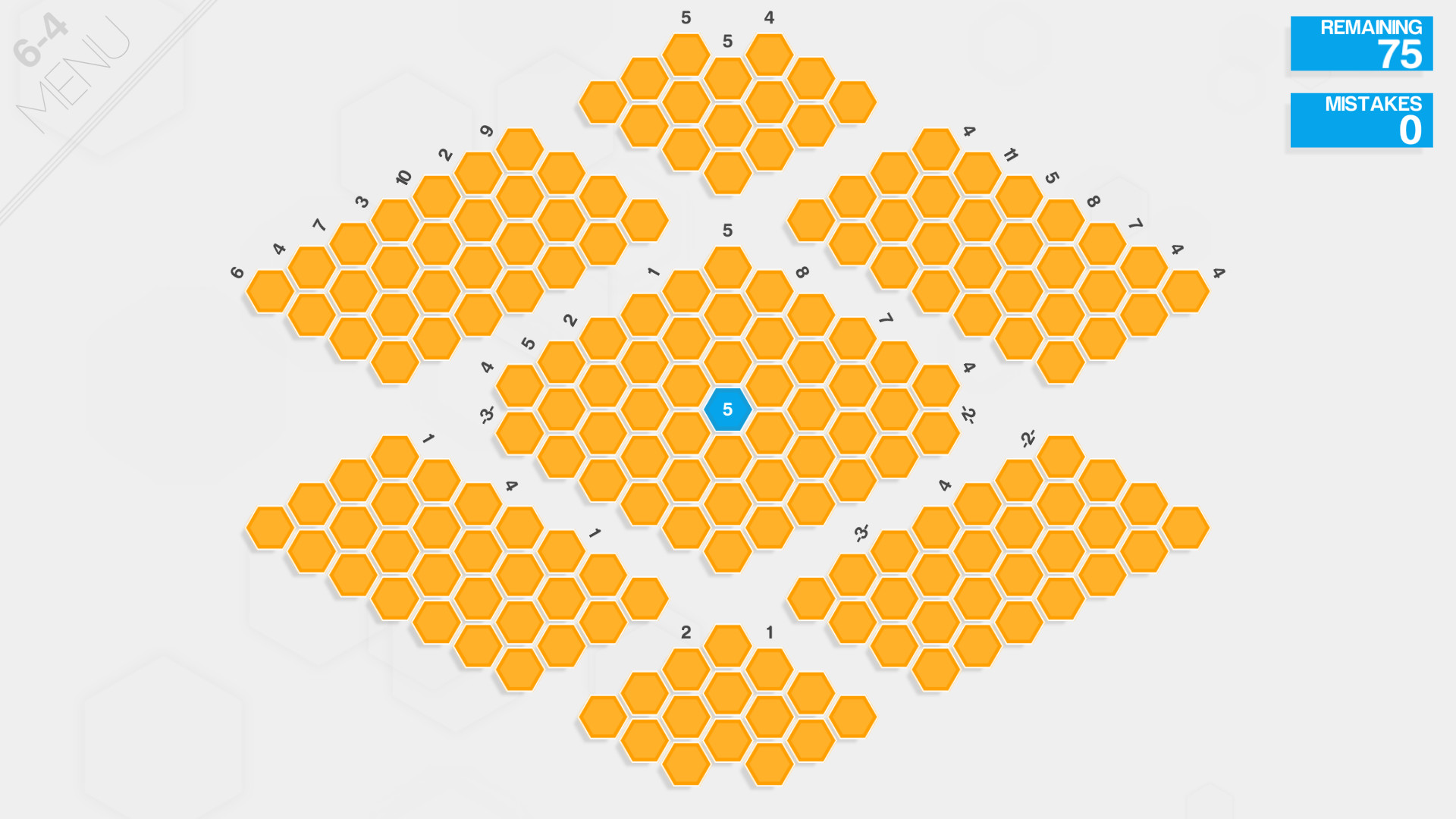
Release date: 2014 | Developer: Matthew Brown | Steam
Hexcells is a slow, methodical game, because you’re penalized for wrong moves—sort of like advanced Minesweeper. The board is made up of, as you’d expect, hexagons. Some are part of the pattern you’re trying to create, and turn blue when you left click them. The rest are not, and when you reveal them as imposters by right-clicking, they show you how many adjacent hexes are part of the pattern. Some also give you extra information, such as whether or not the adjacent blue hexes are adjacent to each other or separated.
Hexcells is about considering simple bits of information and determining what hidden information they reveal. For instance, if an uncovered cell is adjacent to one blue cell, and a blue cell is already uncovered next to it, you can safely count out all the other cells touching it. Pretty simple for simple patterns, but it very quickly becomes tricky, like advanced Sudoku. The feeling when you clear a puzzle with no errors is one of relief more than victory, but it is really satisfying to sweep the board without a single misclick. This one isn’t for those who like to fiddle with a problem until they find a solution—Lyne or Infinifactory come to mind—but for those who like to make deliberate moves for a precision puzzling strike.
Antichamber

Release date: 2013 | Developer: Alexander Bruce | Steam
Explaining Antichamber to people is difficult. It’s a stone cold first-person puzzle game, no doubt. There are definite rules in its stripped down corridors and cryptic rooms, they just take an entirely different perspective—sometimes literally—to understand. There’s no invasive narrative precedence to speak of, so the gameplay is reduced to exploration that hinges entirely on the player’s curiosity. You spend the majority of the game encountering strange architecture or tools attempting to decipher if they can be used to traverse through an environment or to clue you in on other rules in Antichamber’s world. Most conventions of how we understand physical space through the first-person perspective are twisted in subtle ways or thrown out completely. To explain how is to ruin the game completely.
Most surfaces, including objects, are white with black lines defining their features, but color gradients sway in and out of certain halls and rooms as if to evoke the intimate, troubling psychosis of our dear friend, MS Paint. The thing is, all the color has meaning. It, and nearly every visual, auditory, and tactile component feed into the game’s psychedelic logic. Learning this logic is only half the battle, the remainder is applying that logic to even more mind-bending puzzles. So, for example, once you learn that certain doors can only be opened if they cannot be seen, applying the same line of thinking to an increasingly complex series of puzzles turns from mental exercise to an exercise in integrity. The more you understand in Antichamber, the less you trust yourself.
World of Goo
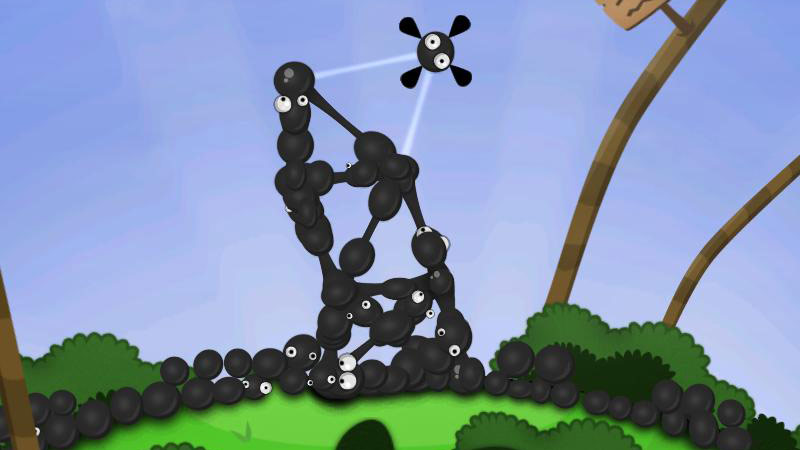
Release date: 2008 | Developer: 2D BOY | Steam
Like all the best puzzle games, World of Goo's core concept is simple: Use elastic, adhesive (and sentient) balls of goo to build structures that will enable them to climb up to a pipe, where they can be sucked up and delivered to the World of Goo corporate headquarters. It's easygoing at the start—build a tower, construct a bridge, nothing too complex—but quickly grows more difficult, and bizarre, in equal measures. Obstacles like whirling blades, spikes, and fire make life nasty and short for many a Goo Ball, and after awhile different species of Balls with unique characteristics will begin to appear. Balloon Goo floats, for instance, while Green Goo can be detached and reused, and Beauty Goo is huge, aggravating, and generally useless. And because everything is made of goo, everything you create is inherently unstable: The trick isn't to build solid structures, but to figure out how to let them sag and sway—because they're going to—without breaking into pieces.
But what elevates World of Goo from a good puzzler to a great game are the detail and flourishes that aren't necessary to the puzzles, but are absolutely indispensable to creating the marvelous world in which they exist. The squealing, bug-eyed Goo Balls are endearingly cute, and the light-hearted, sometimes cryptic messages left by the Sign Painter are entertaining in their own right. There's a story here too, believe it or not, and it actually gets a little dark, although it never entirely lets go of its inherent goofiness. Even the soundtrack, at the risk of overselling it, is sublime, and somehow a perfect match for a game about stretching sticky globs of grease into weird shapes. World of Goo is one of those games that belongs on just about every "games you should play" list, and it’s baffling that, years after its release, there's still no sign of a sequel.
Infinifactory
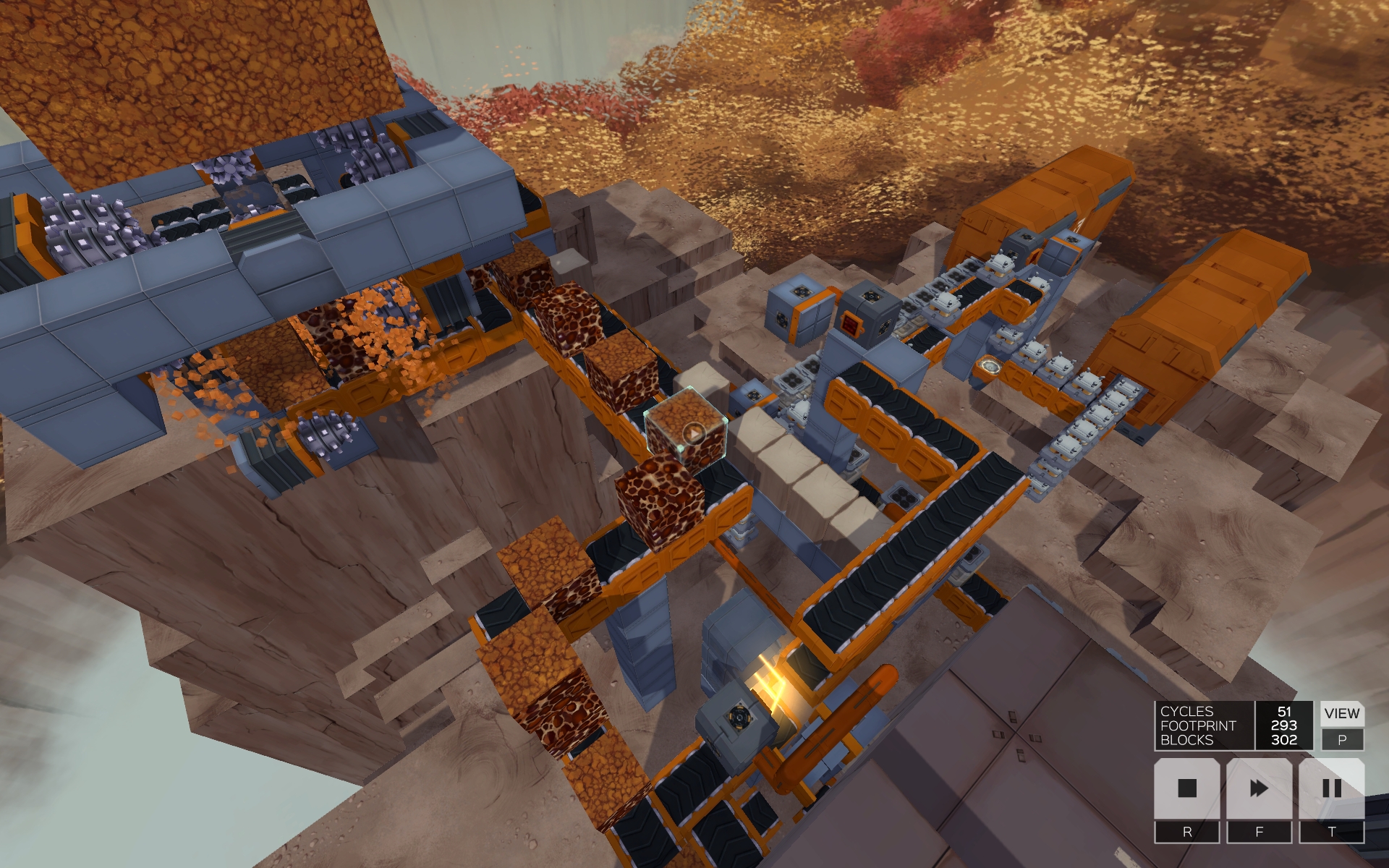
Release date: 2015 | Developer: Zachtronics | Steam
Infinifactory is one of our highest-scored games of 2015, with Chris calling it his favorite puzzle game in years. Like SpaceChem, Infinifactory is a creative factory design game, though a bit more accessible. To please your alien captors, you’ve got to jetpack around a factory dropping blocks—conveyor belt blocks, for instance—to build a machine that will complete a set of goals. The simplest is to transport a component from a dispenser to the correct exit point, but as your tasks get more complicated, logic devices are introduced to increase the complexity of your designs along with them.
Infinifactory is all about satisfaction of building the most beautiful, efficient machine you can and watching it do its work. As Chris put it, “It's the videogame equivalent of those incredibly compulsive looping gifs of factory processes.” There’s also a dark, slapstick story threaded in, and some wonderful environments in later puzzles.
Portal and Portal 2
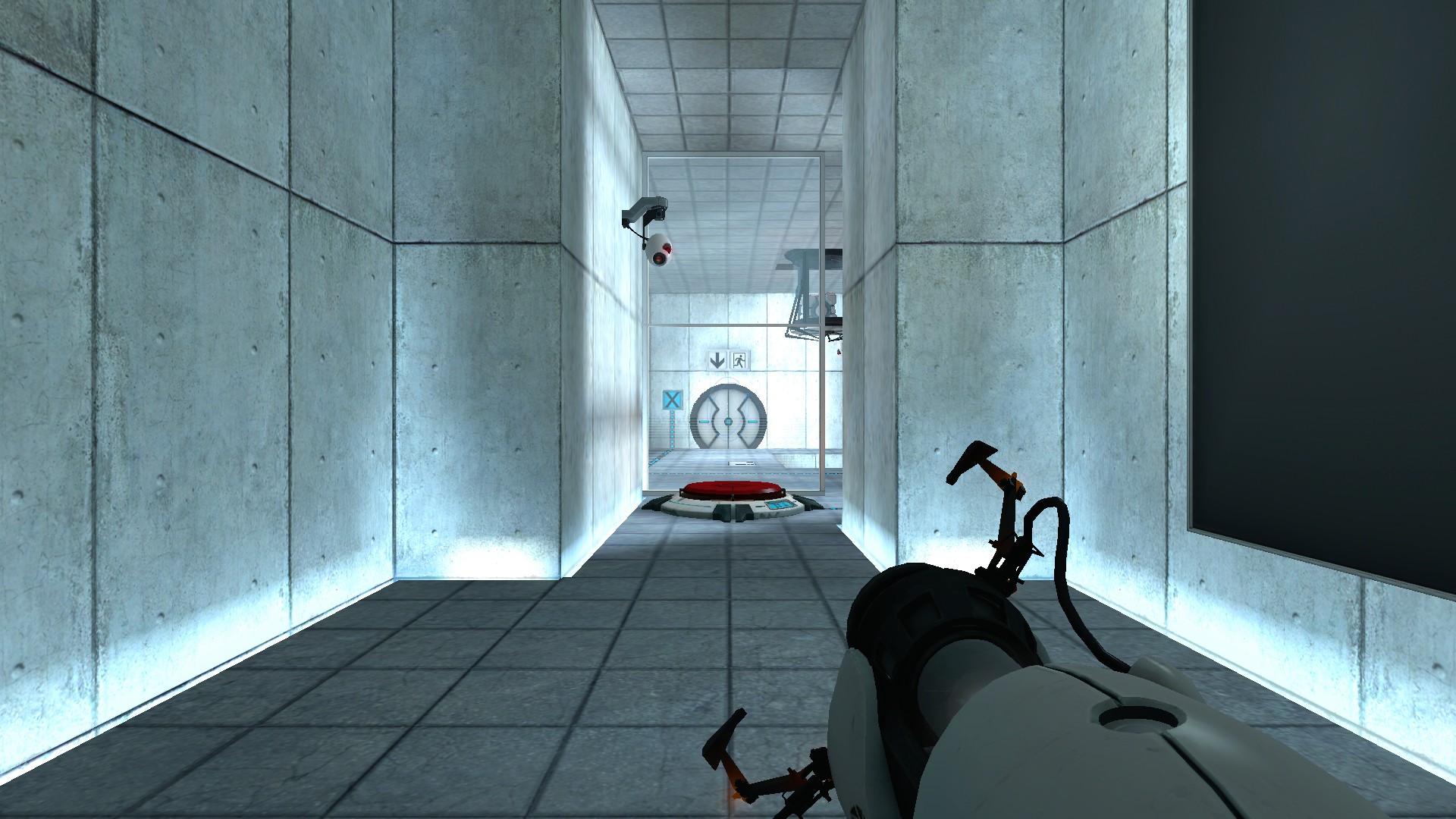
Release date: 2007, 2011 | Developer: Valve | Steam
Portal was a success—a huge one—for a number of reasons. The writing, the humor, and the story that unexpectedly began to drip through the cracks of Aperture Science while we played Valve’s 2007 first-person puzzler. Thing is, it would still be a great game without any of that because the puzzle-solving is so damn great on its own. Escaping a series of test-chambers armed only with a gun that shoots space-warping portals is fun and rewarding. At the time it was also completely different from just about anything we’d seen in an FPS.
The basics are simple to grasp. After placing two portals in two different spots, walking into one portal lets you exit the other, no matter where it is. Each new puzzle chamber is more complex than the last, and soon you’re using portals to avoid turrets, fling yourself over floors of acid, activate buttons and redirect lasers. There are even some reflex and momentum-based puzzles which challenge you to place your portals as you’re sailing through the air. It culminates in an escape of sorts, a fascinating crawl behind the scenes of the facility where we get to put into practice everything we’ve learned. The difficulty increases gradually, getting more complex at just the right pace, so we never feel frustrated and yet it never seems too easy. There’s even a puzzle-based boss fight, and a charming little song when you win. While Portal 2 upped the ante in just about every department, the original is still a wonderful, funny, and rewarding way to spend a few hours. (And, to be clear, we also recommend Portal 2, especially for its co-op puzzles.)
Baba is You
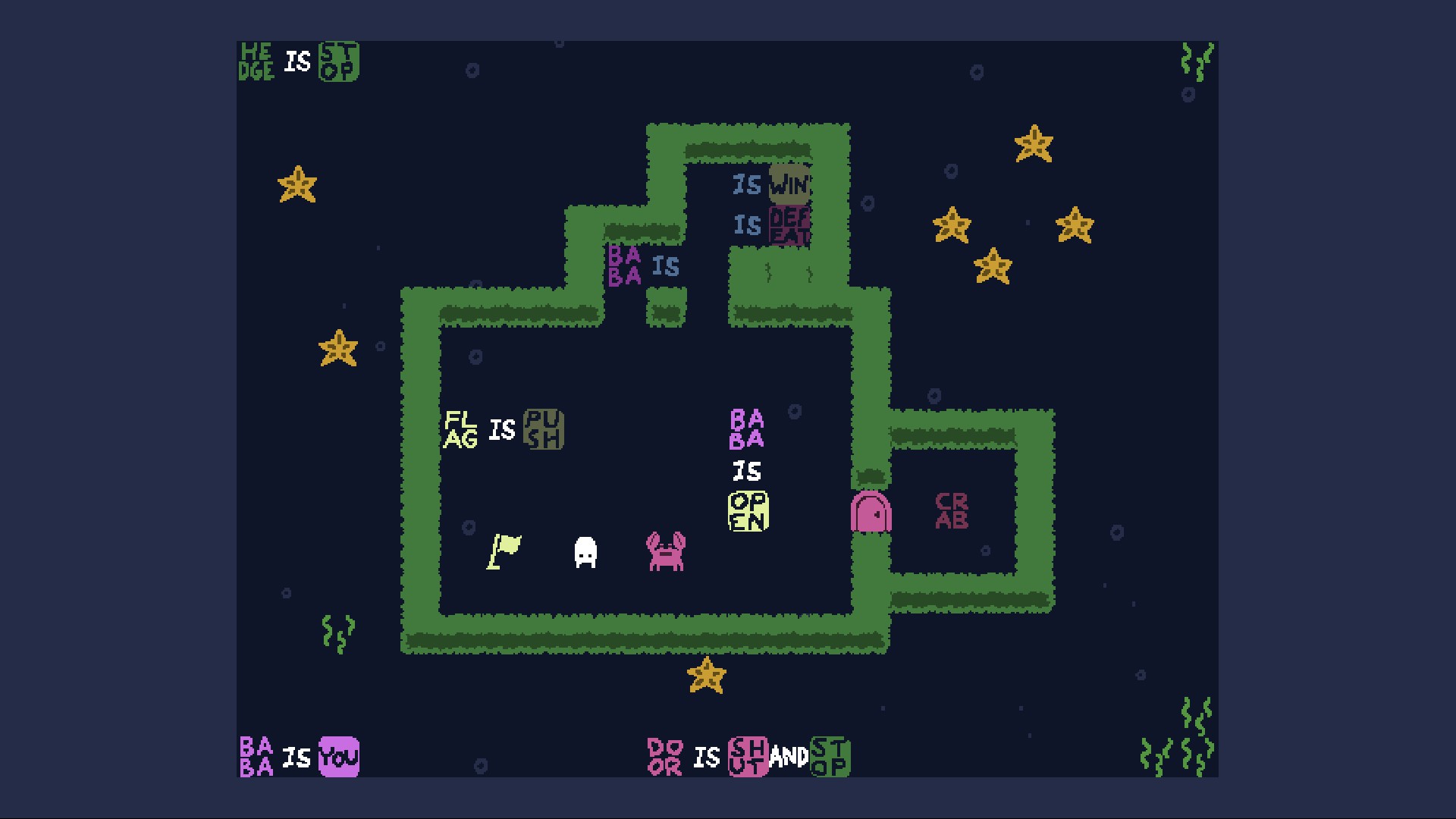
Release date: 2019 | Developer: Hempuli Oy | Steam
Baba Is You gets away with being so infuriatingly mind-bending by also being so dang cute. Baba (you) pushes around blocks of words to change the level environment and the conditions of the game itself.
In one level you start as a rabbit in a walled room. Inside the room with you are three text blocks—“Wall”, “is”, and “stop”. They’re connected in a straight line so the walls currently stop your character from passing through them. If you nudge any of the blocks out of line the walls no longer stop you and you can walk through them.
The blocks which make a win condition for the level aren’t yet connected in a line. The simplest solution to that is to push the blocks marked “flag”, “is” and “win” into a line. After that, walking to the flag will complete the level.
But there are other solutions which immediately start to show you how many possibilities the system involves. You could mix blocks from the first and second room to write “Wall is win”. That lets you finish the level by touching any of the walls.
Although the difficulty curve between levels can feel a bit off-kilter depending on how you personally think about each puzzle, Baba Is You is incredibly versatile, allowing for a number of unorthodox solutions to each level.

Tyler grew up in Silicon Valley during the '80s and '90s, playing games like Zork and Arkanoid on early PCs. He was later captivated by Myst, SimCity, Civilization, Command & Conquer, all the shooters they call "boomer shooters" now, and PS1 classic Bushido Blade (that's right: he had Bleem!). Tyler joined PC Gamer in 2011, and today he's focused on the site's news coverage. His hobbies include amateur boxing and adding to his 1,200-plus hours in Rocket League.
- Shaun PrescottAustralian Editor
- Christopher LivingstonSenior Editor

